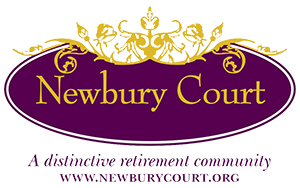Search
Friday, April 20, 2012, Worcester Historical Museum, Worcester
Saturday, April 21, 2012, Harvard Epworth Church, Cambridge
Concerto in D Major ............ Josef Antonín Štepán (1726-1797)
Allegretto • Andante • Tempo di Menuetto
Trio in G Minor for flute, violin, and cello, op. 14, no. 4 ............ Carl Stamitz (1745-1801)
Allegro
Rondo (Allegro)
Piano Trio in E Minor, op. 2, no. 3 ............ Jan Ladislav Dussek (1760-1812)
Poco presto
Rondo (Allegretto moderato)
Intermission
Quartet in D Major for flute and strings, op. 11, no. 1 ............ Adalbert Gyrowetz (1763-1850)
Allegro • Andantino • Allegretto
Al desio di chi t’adora, K.577 from Le Nozze de Figaro, K.492 ............ Wolfgang Amadeus Mozart (1756-1791)
Suzanne Stumpf, flute; Sarah Darling, violin
Marcia Cassidy, viola; Daniel Ryan, cello
Michael Bahmann, fortepiano
Program Notes
The 18th-century chronicler Charles Burney described Bohemia as the “Conservatory of Europe” due to the educational opportunities there that produced many fine musicians who made definitive contributions to European musical culture. The Jesuit schools and the enlightened aristocracy of the Austro-Hungarian Empire fostered a musically sophisticated society that appreciated and provided employment for musicians for Bohemia’s courts, churches, and theaters.
For Bohemian musicians, finding employment commonly involved participating in seasonal musical establishments offered by the Austrian nobility taking up residence in their summer estates. The geography of Bohemia at this time included roughly two-thirds of the western portion of what is now the Czech Republic. By the late 18th century, due to reforms abolishing serfdom, Bohemian musicians were increasingly able to seek opportunities in foreign cities, including Vienna, Mannheim, Paris, and London. This program focuses on preeminent Bohemian composers who influenced musical life across Europe.
Josef Antonín Štepán was born in the Bohemian town of Kopidlno. In 1741, fleeing advancing Prussian armies, he emigrated to Vienna where he became a student of Georg Christoph Wagenseil. Known as a superb harpsichordist and a fine composer, Štepán wrote his most important works for keyboard, including sonatas, concertos, and chamber concertinos. His style was imaginative and somewhat idiosyncratic; many of his keyboard works anticipated compositional techniques of later composers. Despite his failing eyesight after 1775, he continued to compose vocal and instrumental works in a variety of genre. The Concerto in D Major that opens this program is an early work that was likely composed in the 1760s. It is in the divertimento format favored by Haydn in his early works of similar instrumentation, making use of elegant and lively conversational gestures with brilliant keyboard figuration throughout.
Carl Stamitz was the son of Johann Stamitz, the founder of the influential Mannheim school of symphonists. The Mannheim orchestra was famous for the precision and expressivity of its players, comprising “an army of generals” in the words of Charles Burney. Although Carl was merely 11 years old when his father died, he absorbed the art of this fine musical establishment through the tutelage of orchestra members Cannibich, Richter, and Holzbauer. Unlike his father, Carl spent most of his career as a traveling string virtuoso, undertaking concert tours (often with his brother Anton) to Paris, London, and various German cities. His Trio in G Minor was published in London around 1780 and clearly shows the influence of the Mannheim school. The stormy first movement of this work is replete with crescendos, sudden shifts of dynamics, and a clear and direct harmonic language. The jovial rondo features animated solos for each of the instruments.
The life and career of Jan Ladislav Dussek is one that prefigures many of the later Romantic virtuosos. At the age of 19 he traveled from Prague to Holland where he began his extensive career as a concert pianist. Dussek was one of the first traveling virtuoso pianists and spent much of his career on concert tours, performing in all the major cultural centers in Europe. He is thought to have been the first to place the piano sideways on stage to enable audiences to see the performer’s hands. Dussek’s writing for the piano includes virtuoso figuration, full textures, and frequent modulations, foreshadowing many trends that were later to become common for many Romantic piano composers. His Piano Trio in E Minor was composed in 1787. Its darkly expressive first movement displays a richness of texture and complexity of figuration. This is contrasted by a wistful rondo which hints at the previous movement’s brooding qualities.
Adalbert Gyrowetz was a multifaceted composer whose music was performed throughout Europe. He developed a warm friendship with W. A. Mozart, who admired him greatly and presented one of his symphonies in a subscription concert. In 1791, while in London, Gyrowetz helped the newly-arrived Haydn by introducing him to important people in society there. Works by both composers were performed in concerts organized by the impresario Salomon. In 1806 he was appointed second Kapellmeister to the Viennese court, where his attention turned to opera, singspeiel, and ballet composition. His works for the stage were highly influential and later provided inspiration to Meyerbeer, Wagner, and Verdi.
Gyrowetz’s Quartet in D Major was published in 1785. It is composed in the language of mature classicism with well-developed themes, surprising and skillfully handled modulations, and engaging, often humorous musical dialogue. It possesses a strikingly similar dramatic structure to Mozart’s excellent flute quartet in the same key.
Mozart is known to have had a good relationship with the audiences of Prague. The Mozart biographer Maynard Solomon writes that “an enthusiasm for Mozart … has passed into legend, with Prague seen as the good city that supported and understood him at a time when he had allegedly been neglected, even scorned, by Vienna.” Mozart’s opera The Marriage of Figaro, premiered in Vienna, was performed in Prague in 1786 to great success. A reviewer for the Prague newspaper Oberpostamtzeitung wrote “No piece (so everyone here asserts) has ever caused such a sensation as the Italian opera Die Hochzeit des Figaro, which has already been given several times here with unlimited applause.” The arrangement of the aria Al desio di chi t’adora was published and presumably created by Franz Anton Hoffmeister. The richness of Mozart’s original orchestration, with its inclusion of basset horns in place of oboes, is effectively evoked in Hoffmeister’s quintet setting.
© Suzanne Stumpf and Daniel Ryan











Daniel Ryan and Suzanne Stumpf, Artistic Directors
349 Boston Post Road, Weston, MA 02493
tel. (781) 466-6694
All content © Musicians of the Old Post Road
Privacy Policy
Terms & Conditions
